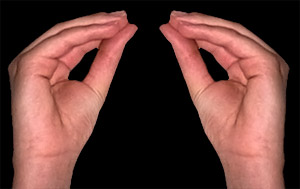 Mukula mudra also called `Beak hand mudra` is a very simple mudra which is performed for various physical and mental benefits. Mukula mudra resembles the bud of a lotus flower. It is considered as one of the effective mudras among all. Once this mudra is practised, it ensures an instant feeling of rejuvenation. It increases a sharp focus of healing energy, like a laser beam or a shaft of light, which is directed to the area of concern.
Mukula mudra also called `Beak hand mudra` is a very simple mudra which is performed for various physical and mental benefits. Mukula mudra resembles the bud of a lotus flower. It is considered as one of the effective mudras among all. Once this mudra is practised, it ensures an instant feeling of rejuvenation. It increases a sharp focus of healing energy, like a laser beam or a shaft of light, which is directed to the area of concern.
It can be an effective healing tool too. Mukula mudra is placed on the organ or body part that hurts or is tense. It directs energy to a specific part. This mudra is an energy-giving and relaxing mudra.
Practice of Mukula Mudra
This mudra can be practiced in two ways. In the first method, the practitioner has to join the tip of five fingers to form a beak. Within a minute the practitioner will experience build up of energy at the tip of the beak. Now he can redirect this energy to any body part that needs healing. One just needs to touch that part (lungs, kidney, knee etc) and imagine the energy flowing to the troubled body part.
The second way is just about holding this mudra for five minutes before each meal. This will abolish toxins and purify Chakras. After performing this mudra one will feel rejuvenated.
The practitioner has to keep an important thing in mind that this mudra must be practiced in sitting posture. One should not practice this mudra with bare feet touching the floor. The practitioner must sit on a yoga mat, bed or chair.
Benefits of Mukula Mudra
Mukula mudra provides innumerable health benefits. The key benefits are as follows:
•This mudra directs energy where healing is required.
•It is capable of curing any kind of disease.
•Regular practice of this mudra ensures strong immune system.
•It ensures added glow and radiance on face.
•The practice of this mudra helps all the parts of the body to regain their natural strength.
•It improves concentration and strengthens meditation power.
•It calms the mind and helps to get rid of negative thoughts.




















